- Suckers
- Suckers muscular with simple aperature (see drawing on right).
- Eyes
- Large
- Funnel
- Funnel organ V-shaped.
- Fins
- With anterior fin lobes??
- With anterior fin lobes??
- Gills
- 6-8 primary lamellae.
- Base of lamellae 3 and 4 with common afferent vessel.
- Optic lobe and nerves
- Optic lobe kidney shaped.
- 2-3 optic-nerve bundles penetrate white body on left side and 3-4 on right side. (The white bodies are dark brown to purple in color.)
- Digestive system
- Radula absent.
- Salivary glands absent.
- Crop present as expanded esophagus.
- Stomach large without external demarcation.
- Caecum poorly developed, without spiral coiling.
- Intestine about 1.5 times esophagus lengh.
- Digestive gland unilobular.
- Beaks
- Upper jaw with single, broad-based tooth and strong lateral-wall fold.
- Lower beak with long lateral wings (98% of beak length) and two weak folds.
- Male reproductive system
- Complex of accessory glands 1-3 greater in size than seminal vesicle complex.
- Accessory glands 2 and 3 dominate complex.
- Penis well developed, tubular.
- Shell
- Shell not solid ("vacuolate").
- Saddle with single deep excavation (outer surface convex, inner surface concav).
- Fin insertion points marked by 2 well-developed shoulders.
- Wings diverge from saddle at 45° angle; taper to acute point.
- Pigmentation
- Areolar spots on dorsal surfaces of mantle, head and arm bases; 7 spots on head and each arm I, 6 spots on head and each arm II, 4 spots on each arm III and 3 spots on each arm IV.
- Dorsal and ventral surfaces maroon.
- Margins of eyes, outer margins of fins and cirri, off-white.
- Oral surfaces of arms and web, deep maroon, nearly black; suckers and sucker aperatures off-white to pale yellow.
- Measurements
Comments
The above description is from O'Shea (1999).


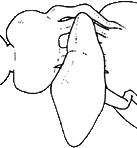
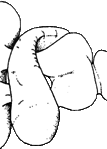
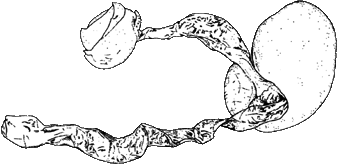
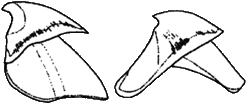
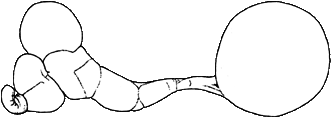
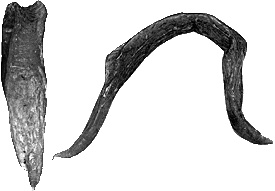



 Go to quick links
Go to quick search
Go to navigation for this section of the ToL site
Go to detailed links for the ToL site
Go to quick links
Go to quick search
Go to navigation for this section of the ToL site
Go to detailed links for the ToL site